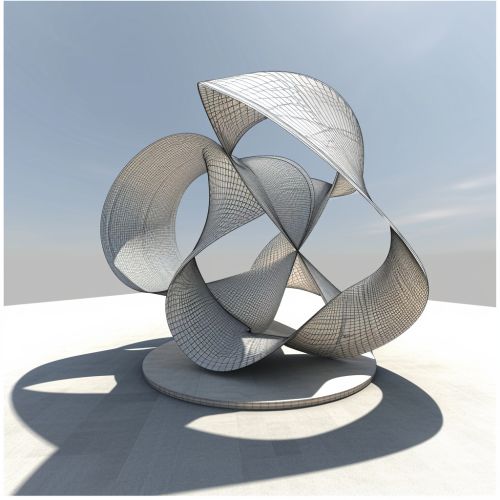Riemannian Manifold
Introduction
A Riemannian manifold is a real, smooth manifold M equipped with an inner product g_p on the tangent space T_pM at each point p that varies smoothly from point to point in the sense that if X and Y are differentiable vector fields on M, then p ↦ g_p(X(p), Y(p)) is a smooth function. The Riemannian manifold is a foundational concept in differential geometry and has applications in physics, particularly in the theory of relativity.
Definition
Formally, a Riemannian manifold is a pair (M, g) where M is a smooth manifold and g is a Riemannian metric on M. A Riemannian metric g is a smoothly varying, symmetric, positive-definite, bilinear form on each tangent space T_pM. This means that for each point p in M, g_p is an inner product on the tangent space T_pM.
Properties
Riemannian manifolds are characterized by several important properties. For instance, they are locally isometric to Euclidean space, meaning that the geometry of a small region in the manifold resembles that of flat space. This is a consequence of the fundamental theorem of Riemannian geometry, which states that there exists a unique Levi-Civita connection compatible with the metric and the differential structure.
Riemannian Metrics
A Riemannian metric is a smoothly varying choice of inner product for each tangent space of a manifold. The Riemannian metric determines the geometry of the manifold, including its curvature. The curvature of a Riemannian manifold is described by the Riemann curvature tensor, which is derived from the metric.
Curvature
The curvature of a Riemannian manifold is a measure of how much the geometry of the manifold deviates from that of flat space. The curvature is determined by the Riemann curvature tensor, which is a function of the metric and its first and second derivatives. The curvature tensor has many important properties, such as the first and second Bianchi identities.
Geodesics
Geodesics are curves that generalize the concept of a straight line to Riemannian manifolds. They are defined as the curves that parallel transport their own tangent vector. Geodesics play a crucial role in the study of Riemannian manifolds, as they are the curves of shortest length between points, and they are used to define the concept of distance in the manifold.
Applications
Riemannian manifolds have numerous applications in mathematics and physics. For instance, they are used in the theory of relativity, where the spacetime is modeled as a four-dimensional Riemannian manifold with a metric that is determined by the distribution of matter and energy.


